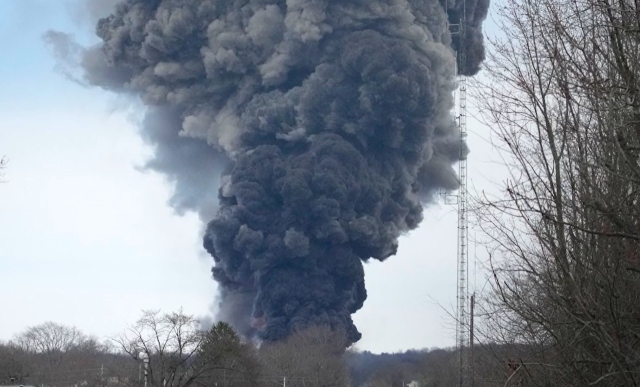'Significant' amount of chemically contaminated water from Ohio rail spill being sent to Baltimore
The plan to transport a considerable quantity of hazardous wastewater from the East Palestine, Ohio train derailment via rail to a wastewater treatment plant situated east of Baltimore City, and then release it into the nearby water supply, has the potential to trigger public outrage among local residents in the Maryland city.
According to a letter obtained by
the local media outlet WYPR, contractor
Clean Harbors of Baltimore Inc. referred to itself as the "optimal wastewater treatment site to treat and discharge the wastewater collected from rainwater, collected water and stream water above and below the cleanup site of the Norfolk Southern Railroad derailment."
Upon receiving authorization, the contractor plans to transport over 675,000 gallons of toxic wastewater to the Back River Wastewater Treatment Plant located in Baltimore County, which might worry residents of Baltimore, especially considering that the transportation method is by rail. The approval for this operation is anticipated to be granted soon, the local outlet reported.
"The water would be pre-treated by a contractor then dumped into the city-controlled wastewater system then cleaned with the city's Back River Wastewater Treatment Plant in Dundalk,"
WYPR said.
Baltimore City Mayor Brandon Scott expressed major concerns about the shipment and the plan to treat the chemically tainted water before release.
"Both the county executive and I have grave concerns about the waste from this derailment coming into our facilities and being discharged into our system," he told
WYPR.
Scott stated his desire for further testing to be conducted before the water is discharged from the plant and introduced into the water system.
The derailment of a Norfolk Southern train in East Palestine, Ohio, which caused a destructive chemical spill early this month, was “
100 percent preventable," according to National Transportation Safety Board (NTSB) Chair Jennifer Homendy, who made the admission at a news conference on February 23, just a few weeks after the train derailment spilled millions of gallons of toxic chemicals and other substances.
“I can tell you this much: This was 100 percent preventable. We call things accidents. There is no accident. Every single event we investigate is preventable,” Homendy said. However, she quickly added that
there was no evidence that the train crew had done anything wrong.
The NTSB's initial findings on the incident revealed that, during the final 30 miles of its journey, the temperature of one of the train's wheel bearings reached 215 degrees Fahrenheit. This was confirmed by two sensors installed along the route to detect overheated bearings.
Norfolk Southern verified that the heat sensors were in proper working order, but the train's alarm system was configured to sound only when the temperature was even higher than the recorded temperature.
By the time the warning system sounded, the bearing had heated up to a temperature 253 degrees higher than its surroundings. Despite the engineer's prompt action to slow the train down, the bearing reportedly failed and resulted in a derailment at the 23rd car.
The plastic pellets that were being carried inside the railcar caught fire after being exposed to the overheated bearings, rapidly spreading to 11 other cars containing hazardous materials. Out of the five cars that were filled with vinyl chloride, authorities eventually opted to release and incinerate them on the site.
Homendy stated that it is currently "too soon to say" definitively how the catastrophe could have been averted. The official informed reporters that the NTSB would continue to examine whether the heat threshold for high-temperature alarms and other defect detectors, rail car and wheel design, as well as the positioning of sensors along the track, meet industry safety standards and may necessitate modifications.
Norfolk Southern’s inspection practices will also be investigated. The NTSB will look at whether the rail operator correctly disposed of the vinyl chloride.
Sources include:
NewsTarget.com
RT.com
WYPR.com
 Parler
Parler Gab
Gab










